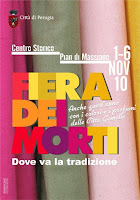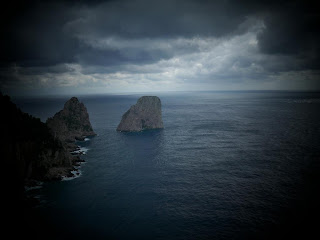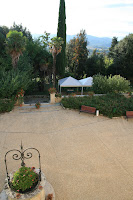Professor Zachary Nowak participated in a conference on cultural integration in Florence.
This past weekend Umbra Institute professor Zachary Nowak presented a paper on the creation  of Italian-American cuisine during a conference in Florence. The conference, entitled “Italian Cultural Integration: Facts & Fiction,” was organized by SUNY Stony Brook and the Palazzi Florence Association for International Education. The aim of the conference was to introduce, focus on, and outline different perspectives that concern Italians as migrants from the past two centuries on and contemporary Italians in their country integrating with other ethnic groups.
of Italian-American cuisine during a conference in Florence. The conference, entitled “Italian Cultural Integration: Facts & Fiction,” was organized by SUNY Stony Brook and the Palazzi Florence Association for International Education. The aim of the conference was to introduce, focus on, and outline different perspectives that concern Italians as migrants from the past two centuries on and contemporary Italians in their country integrating with other ethnic groups.
Nowak’s paper, “Integration at the Dinner Table: The Creation of Italian-American Cuisine,” outlined the ways that the culinary traditions which Italian immigrants brought to the United States were molded and changed by various factors—the relative food abundance, the mixing of Italians from all regions in Little Italies, the need to render “Italian” food more similar to American food—, leading to the creation of a genuinely distinct cuisine. Nowak followed the history of that most Italian-American of dishes, spaghetti with meatballs, to illustrate these processes.
This paper was part of Nowak’s larger research on the origin of food myths and the social reasons for their perpetuation.



 This year’s fall break coincided with Italy’s national holiday, falling on November 1st, , a day dedicated to honoring loved ones who’ve passed away. Locals here in Perugia celebrate the day amid family, friends and lots of food while outside of town near the stadium the annual fair is in full swing–complete with carnival rides, food and an enormous market called Fiera dei Morti (Fair of the Dead). A smaller market in the center of Perugia is set up and vendors are selling everything from homemade treats like strudel, cured meats and cheeses and handmade crafts. The fair goes on until November 6th.
This year’s fall break coincided with Italy’s national holiday, falling on November 1st, , a day dedicated to honoring loved ones who’ve passed away. Locals here in Perugia celebrate the day amid family, friends and lots of food while outside of town near the stadium the annual fair is in full swing–complete with carnival rides, food and an enormous market called Fiera dei Morti (Fair of the Dead). A smaller market in the center of Perugia is set up and vendors are selling everything from homemade treats like strudel, cured meats and cheeses and handmade crafts. The fair goes on until November 6th.




 eighteenth centuries on this very local and quite unusual medieval Florentinebeato, Umbra Institute Art History Professor Adrian Hoch has written a significant paper which will be published in the journal of the prestigious Kunsthistorisches Institut in Florence.
eighteenth centuries on this very local and quite unusual medieval Florentinebeato, Umbra Institute Art History Professor Adrian Hoch has written a significant paper which will be published in the journal of the prestigious Kunsthistorisches Institut in Florence.